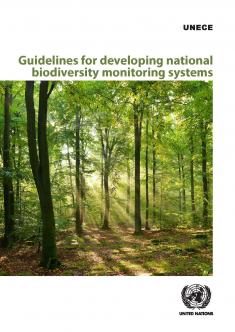In December 2022, the resumed fifteenth meeting of the Conference of the Parties to the Convention on Biological Diversity adopted the Kunming-Montreal global biodiversity framework, including a monitoring framework.
The present Guidelines for developing national strategies to use biodiversity monitoring help make biodiversity monitoring a practical tool for environmental policy. The guidelines offer advice on how to:
- Develop plans and strategies for the conservation and sustainable use of biodiversity
- Mainstream biodiversity conservation objectives across policy sectors
- Assess progress in achieving policy targets and the effectiveness of conservation measures
- Minimize health, environmental and socioeconomic risks resulting from biodiversity loss and ecosystem degradation
- Maximize benefits from biodiversity and ecosystems.
The guidelines are addressed to government officials and experts working for governmental bodies responsible for environmental policy, environmental monitoring and compliance monitoring.
In developing national capacities for biodiversity monitoring, the readers may also benefit from the work of the Joint UNECE/FAO Forestry and Timber Section (Forests, Land and Housing Division) in forest monitoring, reporting, and assessment. The Joint Section supports UNECE member States in developing their comprehensive forest information systems via guidelines for the development of criteria and indicators for sustainable forest management and their evaluation.
Information on forest biodiversity is an integral component of the Joint Section forest information systems. Forest data, including biodiversity indicators, are made available through the online Joint UNECE/FAO/Forest Europe pan-European Dataset of 2020 and published through the InForest platform.
